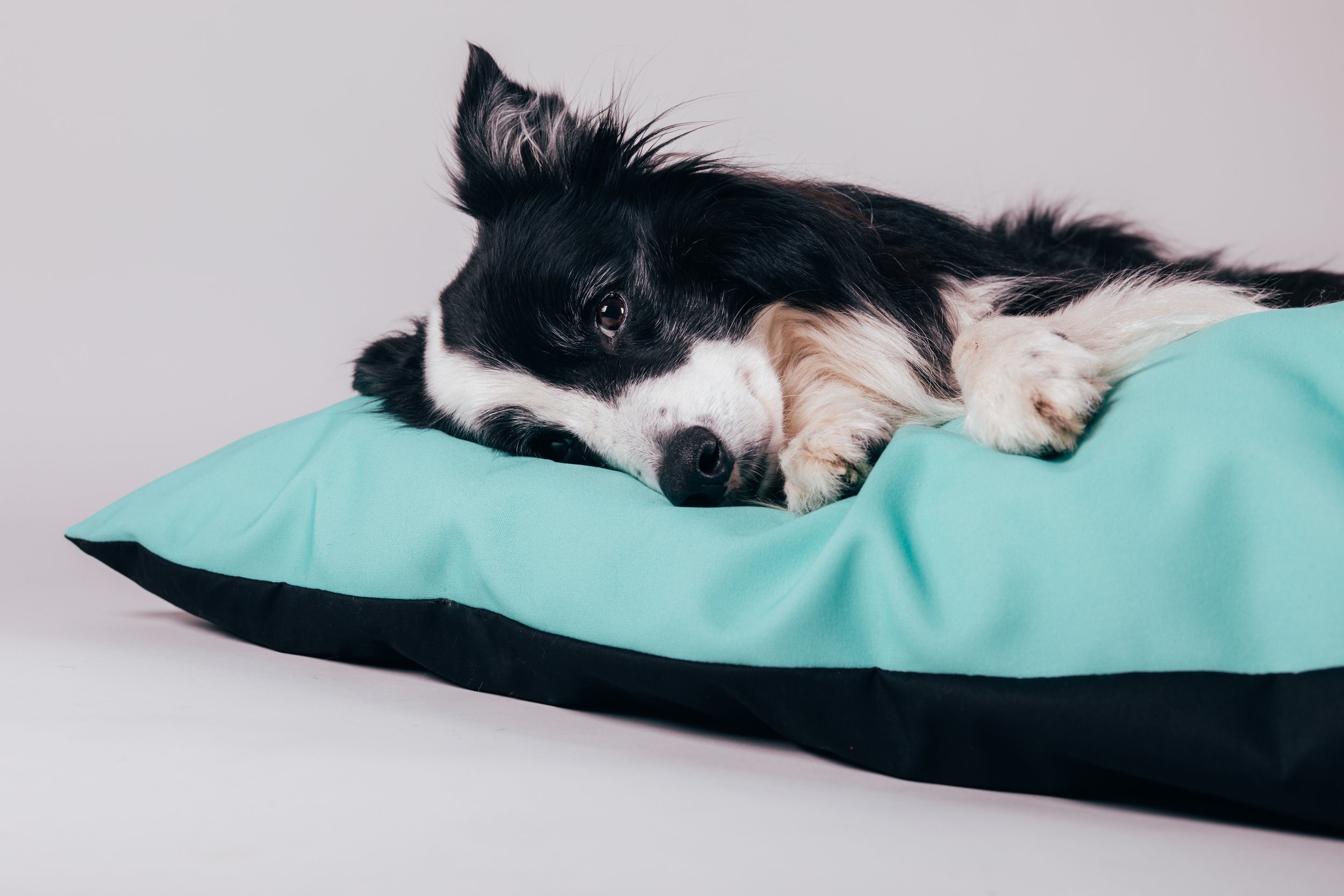What are the pros and cons of crate training your dog?
For your dog, a crate can be a comfortable den for them to relax, sleep, and feel safe. However, like other training methods, crate training isn’t for every pup and it’s best to weigh up the pros and cons of crate training, depending on the needs of your best bud.
So, what is crate training?
Crate training involves teaching your dog to feel comfortable within their crate, and there are a variety of different ways you can do this. Crate training won’t just happen overnight! It’s a steady process in which, over time, your dog will eventually view their crate as their own comfortable, safe space where they can relax.
If introduced in the correct way, most dogs will adapt to crate training. It is important to remember that the main goal of crate training is to make your dog view their crate in a positive way and not as a form of punishment for bad behaviour. Crates should never be used in this way!
The type of crate you will need will depend on its intended use. If you’re looking to use it just for travel, make sure to consider its functionality when shopping for a suitable crate for your pup.
What different types of crate are there?
Many crates are either made of thick wire or fabric and often only have one door. However, for larger crates that are well suited to bigger breeds, you may find that they have two doors. It’s important to consider the size of your dog’s crate when you are selecting the perfect den for them to relax and sleep in. The bigger the dog, the bigger the crate will need to be. Remember, for crate training to go as smoothly as possible, you’ll want your dog to feel comfortable and that they have enough space to move around in so they don’t feel trapped.
For ease of use, and a more lightweight option, fabric crates are a great choice. Not only are they much more convenient to move around, they are also more comfortable for your pup when packed full of their favourite snuggly blankets and cuddly toys. Although, if you are using a crate for travel and you have a boisterous pup who likes to move around, you may find that a wire crate is better suited to your dog's needs.
What are the benefits of crate training?
It creates a sense of security
A crate is a great way to offer your dog a sense of security, creating the ‘ultimutt’ space for them to feel their most comfortable.
It can reduce your dog’s anxiety
In addition to this, another big benefit of crate training is that it can reduce your dog’ss anxiety. If your dog seems a little nervous, tired, or stressed, their crate can be an inviting space for them to calm down and feel settled. Give your dog’s crate a pup-grade and create their very own cosy snuggle spot with a personalised dog blanket, or even their very own cushion.
It’s great for travel
Are you and your pup off on a long-awaited adventure? Great news! If your dog is crate trained, they are much more likely to behave during long car journeys as they can travel comfortably, and most importantly safely, in their crate.
Supports your potty training efforts
Another great benefit of crate training your dog is that it supports your potty training efforts. Many people believe that crate training is the most effective way to toilet-train your puppy as it teaches them to hold their bladder when they are not in the right place. This is because most dogs will avoid making a mess where they sleep. Remember to use positive reinforcement when potty training. As well as praise, you can also reward your dogs with a tasty treat when they go to the toilet in the right place.
A crate makes the perfect den for dogs who’ve had surgery or just had a litter
Perhaps one of the biggest benefits of crate training is being able to create a safe space for your dog for when they’ve had surgery or given birth. If your dog has just had surgery, crates are a great way to encourage them to relax and recover, without the risk of causing other injuries.
In addition to this, crates are beneficial for dogs who’ve just had a litter of pups. They provide a safe space for a litter to be nurtured by their mum, whilst also keeping warm and snug.
What are the disadvantages of crate training?
It’s safe to say that crate training is not for everyone, and there are also some benefits of not crate training your dog. Remember to consider your dog’s individual needs whilst weighing up the pros and cons of crate training to help you make the best choice for your pup.
Crates can be stressful for some dogs
Whilst research suggests that crates are a great way to reduce certain anxieties, they can unfortunately have the opposite effect for some dogs. This is why it’s important to consider your dog as an individual and establish if there are more benefits to not crate training your dog, rather than attempting to crate train them and in turn, make them more stressed.
Crates can make some dogs feel trapped
While a crate can be a cosy place for some dogs, for others it can make them feel trapped. Perhaps the biggest benefit of not crate training your dog is that they won’t be confined to an enclosed space - if you have a dog that feels panicked and frantic in confined spaces, then crate training is probably not right for your pooch.
You can help turn your dog’s crate into a cosy den with a cuddly blanket and cushion for them to snuggle up to, but if they are showing signs of discomfort, then we wouldn’t recommend pushing them to crate train.
If you’re concerned about your dog, separation anxiety or claustrophobia, please speak to your vet.
Crates can cause emotional distress
A large part of crate training is ensuring that your dog can cope with separation anxiety, however, it is important to note that lots of breeds can suffer from separation anxiety, so you need to consider their individual needs before addressing crate training with them.
A crate can be dangerous if assembled incorrectly
When you initially introduce crate training to your dog, please ensure you take the time to assemble their crate correctly. Remember to thoroughly read through instructions and make yourself aware of any hazards, such as poor ventilation.
Top tips for crate training your dog
You would never want crate training to propose any dangers to your dog, in the event that you experience any minor incidents, ensure you have a pet first aid kit to hand to treat minor injuries, then consult professional veterinary advice if needed.
If your dog is prone to becoming destructive when they’re left alone, make sure they’re meeting their exercise needs, as this may help. This way, when you leave your pup, they’ll be ready to relax and nap. Why not explore our furbulous range of personalised dog leads and collars so you’re kitted out for future walks?
If crates aren’t for you and your dog, but you still want to give your pup a comfortable and safe space for them to relax and sleep, then a luxuriously comfy dog bed is guaranteed to give them the sleep of their dreams.







